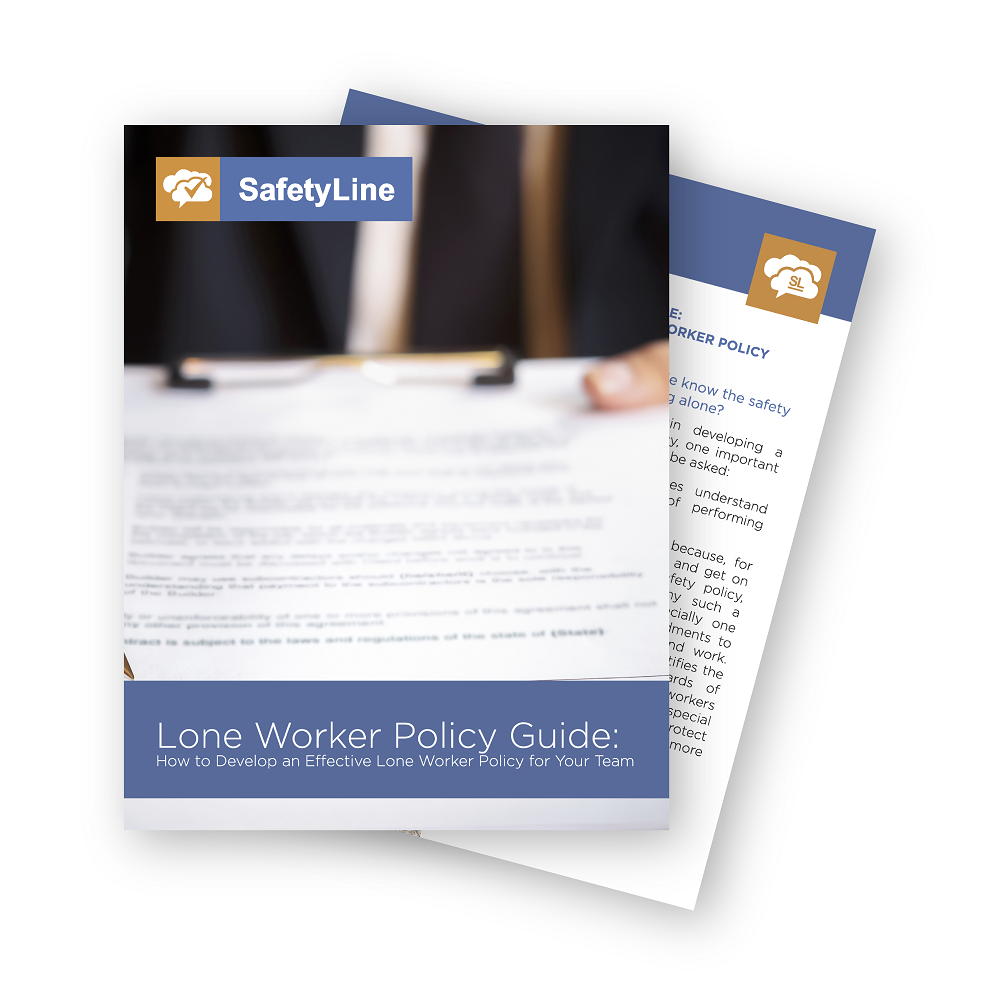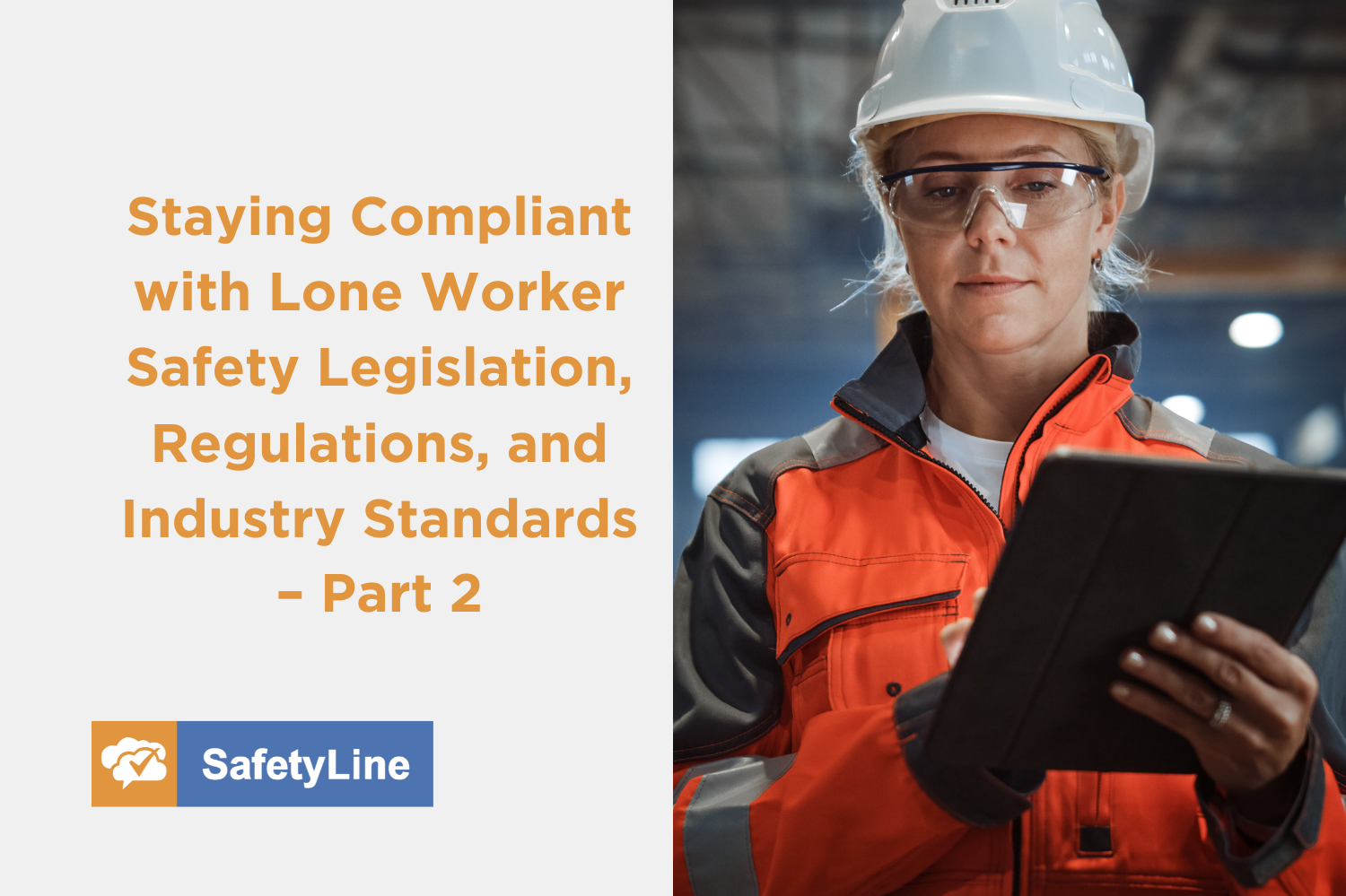Featured Resources
Lone Worker Policy Guide and Template
A lone worker policy is an effective way to ensure that your lone workers are well-educated on your company’s work-alone rules and have extensive knowledge of all workplace hazards that could be encountered on the job.
Hazard Assessment Guide
In the process of doing a hazard assessment for your workplace, it is almost a certainty you’ll learn information about the operational aspects of your organization you were unaware of before the assessment.
View eBook
Develop a Free Lone Worker Program for Small Teams
Developing a free lone worker check-in system is a simple process for small teams that any organization can implement.
View eBook
SafetyLine Blog Categories
General Safety | Lone Worker Safety | SafetyLine News and Updates | SafetyLine Product Updates | Compliance, Policy, and Regulations | Downloadable Resources |
A Guide to Using Satellite Devices with SafetyLine Lone Worker
Lone workers operating in remote or challenging environments face unique risks requiring reliable solutions to ensure their safety and connectivity. Satellite devices play a crucial role in addressing these needs by providing dependable communication links where traditional networks fail. Whether stationed in isolated fields, conducting geological surveys in rugged terrain, or managing conservation efforts in vast, uninhabited areas, these workers depend on advanced satellite technology to maintain critical contact with their teams and emergency services.
Embrace the Spirit of Giving: Nominate Your Favorite Nonprofit Recap
We are looking back at last December’s 2023 Season of Giving Donation Campaign and are happy to be able to support a number of communities through nonprofit organizations you nominated, including: Crossroads Hospice Society, Capilano Community Services Society, Nourish Cowichan, and Canadian Mental Health Association.
Can the Buddy System be Replaced by a Lone Worker Solution?
Let's look at the role of the buddy system within the occupational safety context. This safety strategy is typically used in circumstances where an employee is paired with another employee to increase both people’s safety while at work. It is a safety measure that is intended to make the safety of a coworker the responsibility of an employee and vice versa, making sure they never work alone.
How SafetyLine Enhances Productivity and Efficiency in the Workplace
Occupational safety is connected to a number of organizational priorities including mental health, work culture as well as productivity and quality of the work produced. One of the biggest benefits of a safe workplace is that the quantity and quality tend to improve because employees feel more valued by the employer and value their work more as a result.
Peace of Mind for Employers and Employees: Why Investing in SafetyLine Lone Worker is Worth It
Every employee will face several occupational hazards in their work. However, the severity of risk and injury is significantly increased when the employee works alone, without help readily available if they experience an injury or emergency. What if we tell you that these lone workers can be protected, providing peace of mind to management that these people can get proper medical help in an emergency? The SafetyLine Lone Worker app solves that problem, providing
Can I Refuse to Work Alone in Unsafe Working Conditions?
Wherever we work, there are going to be occupational hazards that test our safety and security. It doesn’t matter if you’re working in a wastewater treatment plant or if you’re a home healthcare worker in a patient’s home – there will be safety hazards, big and small. But when you work alone, the risk of those safety hazards is elevated because there isn’t a coworker nearby to get or provide emergency aid if you get injured. “Lone working” can be defined as performing a task by yourself, without help readily available if you are in trouble.
Staying Compliant with Lone Worker Safety Legislation, Regulations, and Industry Standards - Part 2
Best practices for ensuring lone worker safety
In addition to staying on top of local safety legislation and regulations, there are a number of steps employers can take to make sure their lone workers are safe.
Communication and monitoring systems: The first best practice to ensure lone worker safety is to have effective communication and monitoring systems in place. It is essential that employers establish a system for workers to be able to communicate with others in case of an emergency……
Staying Compliant with Lone Worker Safety Legislation, Regulations, and Industry Standards – Part 1
In the USA, the Occupational Safety and Health Administration (OSHA) does not have specific regulations for lone workers. However, OSHA requires employers to ensure a safe and healthy working environment for their employees, including those who work alone or in isolation (OSHA, 2022). Additionally, several US states have their own regulations that require employers to take specific steps to protect their lone workers.
The Benefits of Attending Safety Conferences: 2023 Safety Conferences and Expos
Safety conferences are unique opportunities to connect with other industry professionals, learn about the latest occupational health and safety (OHS) technologies, as well as stay up-to-date with safety legislation and regulations.
A New Era of Personal Safety Devices on the Market
In a nutshell, these devices will protect an individual worker (or workers - in coordination with other devices) from certain safety hazards in the workplace and other environments and situations. Personal safety devices help employers protect their employees when mobile, employing various technologies to address a range of safety challenges in the workplace at the time. Personal safety devices include a broad group of technology that can include:
The Pros and Cons of a Manual Lone Worker Safety System
As you read further, you will learn about the pros and cons of a manual lone worker safety system. We will also look at the benefits and costs of an automated lone worker safety system for your employees working alone.
Keeping the Lights On: How to Protect Electrical Workers and Electricians
There are so many things in the home and at work that we take for granted, that we just assume will turn on and function as we expect it to. The TV, the printer, the phone charger, or the dialysis machine – all items that need electricity to function. There are tens of thousands of electrical workers – in many capacities – working under the radar – and sometimes in dangerous situations, making sure that we continue to receive electricity to our homes and workplaces so that the technology like the examples mentioned above can work when you need it to.
Your Workplace Safety Reputation: It Matters More Than You Think
A good safety reputation is a crucial asset in attracting and retaining customers. It plays a significant role in building loyalty, cultivating a sense of community, and working towards brand advocacy amongst customers. A positive safety reputation also provides a sense of reassurance and confidence that customers are making the right choice when they choose you.
The Top 5 Most Read SafetyLine Blogs About Safety
On the SafetyLine blog, we have published articles about the constantly changing safety landscape, providing you with information that will help keep you safe while out on the job. So which blogs were the most popular and resonated with you most? Of the more than 50 blogs we published last year, here are the top 5 most-read blog posts by our awesome readers.
What do Your Remote and Lone Workers Want - When They Return to Work in 2021
The safety needs of your team can be complicated and sometimes costly. But as the employer, it is your responsibility to provide everything possible to protect your staff who, in some cases, may be putting their safety at risk to do their job. Include the added layer of COVID-19 protection and the requirements of your workers become significantly more challenging and complex as you are now looking at not only safety and mental health needs, but what is essential to increased remote work and considerations around new social distancing guidelines.
4 Ways SafetyLine Complies with Manitoba Lone Worker Regulations and Legislation
Manitoba is one of the seven provinces in Canada that regulate working alone. Given that having at least two employees on a job site was not always practical or useful in protecting workers, these regulations were established to ensure the safety of those workers who were required to perform their jobs alone.
Essential Work-from-home Areas to Focus on During 2nd Wave of COVID-19
As we approach what could be another wave of COVID-19 and therefore more workers doing their jobs remotely or at home, employers must not only make their safety a priority, but must also focus on the three areas of mental health, engagement and productivity. After many months of living in a pandemic world, you workers may experience quarantine fatigue with their anxiety increasing, and their engagement and productivity decreasing.
Speaking Up to Your Team About Safety Culture
There is a threat existing in many workplaces around the world that most people do not know about. This hazard cannot be mitigated by safety harnesses or helmets, nor can it be prevented through diligent hand washing and face masks. This danger that pervades workplace safety in all industries and in all countries is silence. One of the biggest threats to your company’s well being is having a safety culture where your workers do not feel like they can speak up at work when it comes to their safety. These people understand your company’s safety issues better than anyone and it is in everybody’s best interests that they have a loud voice in this area.
Are Work From Home Jobs Considered Lone Workers?
To slow the spread of COVID-19, restaurants, bars, and public spaces have closed throughout Canada. Following suit, offices have also shut their doors and implemented mandatory work-from-home policies to support self-isolation and social distancing mandates. For many employers and employees, this is a novel concept that requires significant adjustment. Although the transition for some industries may be seamless, other organizations will face significant challenges along the way. As Canada’s workforce shifts from office to working from home, all companies are faced with a new challenge –how to protect their staff who may now be working remotely or alone.
Lone Worker Risks in the Canadian Forestry Sector
When it comes to our Canadian economy, the forestry industry provides a substantial source of wealth for the country. Our forestry trade balance (the difference between what we import and what we export to international partners) accounts for $19.8 billion of Canada’s GDP, according to the Government of Canada. This is equivalent to about 2% and represents the most substantial forest product trade balance in the world. We have held this position for years, and the gap between Canada and Sweden (the second-largest net trader) has been steadily increasing since 2009.























